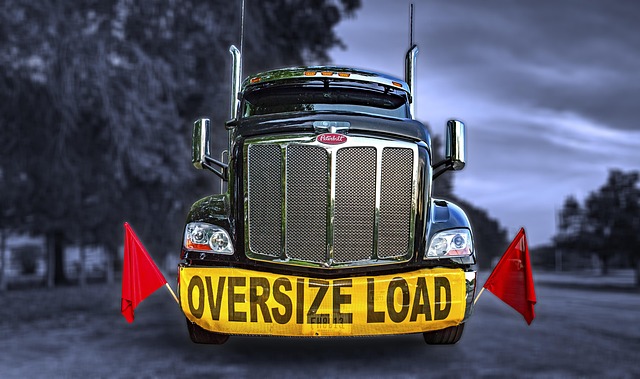Looking to register your car in California? This comprehensive guide walks you through every step, from understanding essential requirements to completing the transaction. Learn about crucial documents needed, including proof of ownership and insurance. Discover if your vehicle passes DMV VIN verification, a key process for ensuring authenticity. By following these clear instructions, you’ll efficiently navigate the car registration process in California.
- Understand California Car Registration Requirements
- Gather Necessary Documents for Registration
- Visit Your Local DMV for Vehicle Inspection
- Complete Online Registration or In-Person Transaction
- Verify VIN and Ensure Insurance Coverage
Understand California Car Registration Requirements

Before registering your car in California, it’s crucial to understand the state’s specific requirements. The California Department of Motor Vehicles (DMV) mandates several essential steps for vehicle registration, including a thorough inspection and verification process. One critical component is the Vehicle Identification Number (VIN) verification, ensuring the authenticity and history of your car.
For convenience, many residents opt for mobile VIN verifiers or inspections. These services offer on-demand checks, allowing you to verify your car’s VIN without visiting a DMV office. This approach saves time and effort, especially when dealing with out-of-state purchases or transfers. By utilizing these modern solutions, you can streamline the registration process, making it easier to navigate California’s vehicle registration regulations.
Gather Necessary Documents for Registration

Before you start the registration process, ensure you have all the required documents. The California Department of Motor Vehicles (DMV) will need several pieces of information and paperwork to complete your car’s registration. One crucial step is to obtain a valid Vehicle Identification Number (VIN) verification. This process can be done through various methods, including a mobile VIN verifier or by visiting a DMV office for an inspection.
For a smooth registration experience, collect your vehicle’s title, current registration documents (if applicable), proof of insurance, and a completed application form. Additionally, you’ll need to provide identification documents such as a driver’s license or state-issued ID card, along with any necessary fees. The DMV recommends using their online services for some verifications, including VIN checks, to save time and avoid potential delays during registration.
Visit Your Local DMV for Vehicle Inspection

Before you can register your car in California, it’s crucial to have your vehicle inspected by your local Department of Motor Vehicles (DMV). This inspection is a critical step in the registration process and involves a thorough check of your car’s compliance with state safety and emission standards. During the inspection, the DMV officer will verify important details such as the Vehicle Identification Number (VIN), ensuring it matches the vehicle’s make, model, and year listed on the registration documents.
A mobile vin inspection or vin inspection service can be particularly convenient if you have a busy schedule or live in a remote area. These services bring the DMV to you, allowing for a seamless and efficient process. By utilizing these options, you can avoid long waits at the local DMV and potentially speed up your car registration by having the necessary verification done on-site.
Complete Online Registration or In-Person Transaction

In California, car registration can be completed either online or in-person at a DMV (Department of Motor Vehicles) office. For an efficient and convenient process, many opt for the former, which involves completing the registration entirely through the DMV’s official website. This method allows drivers to save time by avoiding long lines and reduces the risk of errors as all information is inputted directly into the system.
The online registration process begins with a comprehensive DVW (Vehicle Identification Number) verification, ensuring the vehicle’s history and details are accurate. Once this step is complete, you can proceed with providing personal information, selecting preferred registration options, and making the necessary payments securely. An alternative to this conventional method is utilizing a mobile vin verifier or conducting a mobile vin inspection, which offers added flexibility for those with busy schedules.
Verify VIN and Ensure Insurance Coverage

Before registering your car in California, it’s crucial to verify your Vehicle Identification Number (VIN) and ensure that your insurance coverage is up to date. The DMV (Department of Motor Vehicles) in California requires a valid VIN as part of the registration process. This unique identifier helps them track vehicle history and ensures you’re complying with legal standards. One efficient way to complete this step is by using a mobile vin verifier, which allows for a quick and convenient inspection right from your phone or tablet.
Additionally, having adequate insurance coverage is non-negotiable when registering a car in California. This includes liability insurance, which protects you financially in case of an accident where someone else is at fault. A comprehensive insurance plan can also cover damages beyond liability, offering peace of mind while on the road. Ensure that your policy details match the DMV’s requirements to avoid any delays during registration.
Registering a car in California involves understanding specific requirements, gathering essential documents, and either completing an online or in-person transaction. After visiting your local DMV for vehicle inspection, remember to verify the Vehicle Identification Number (VIN) and ensure you have active insurance coverage. By adhering to these steps and ensuring all necessary details are in order, you’ll successfully navigate the process of car registration in California.
